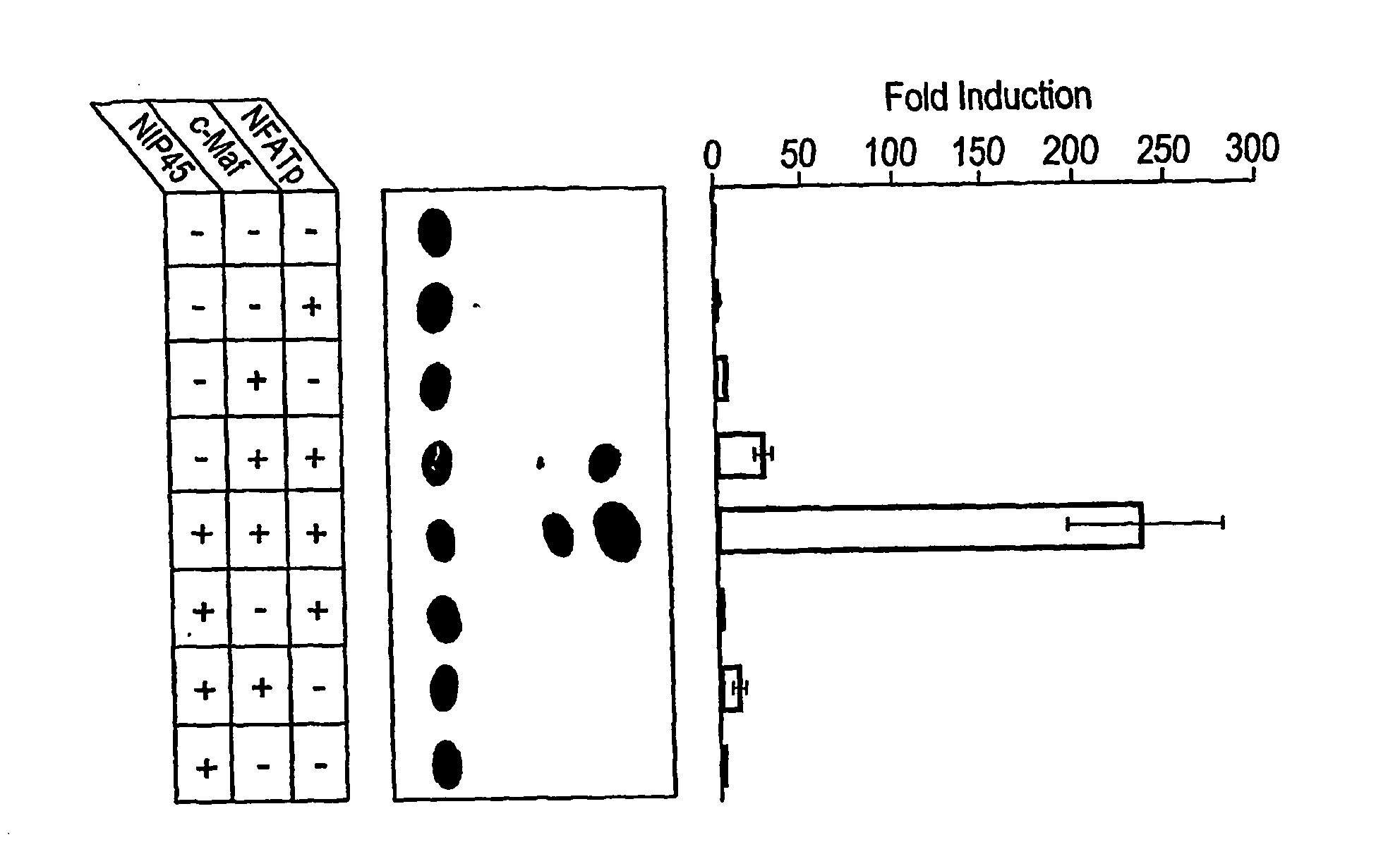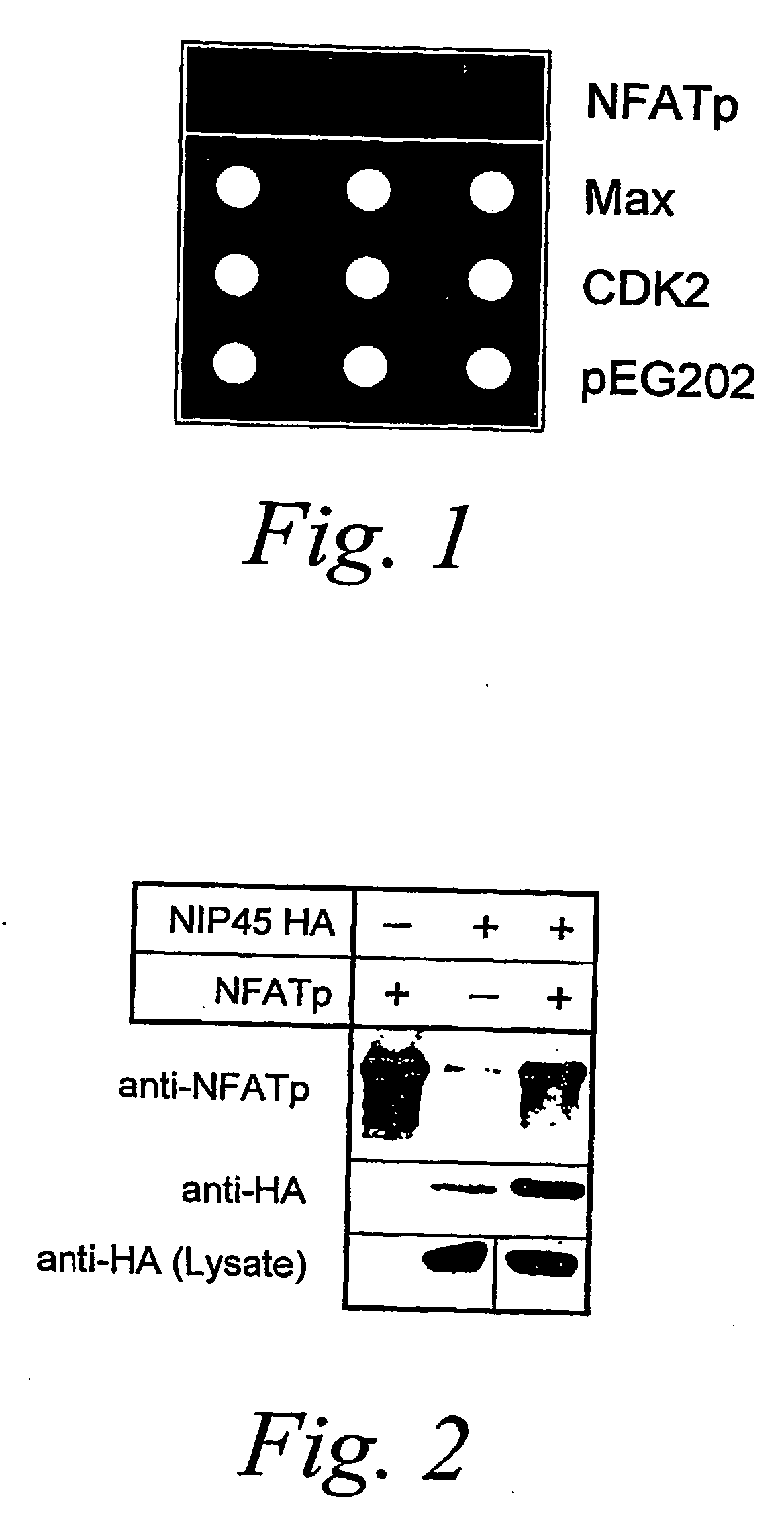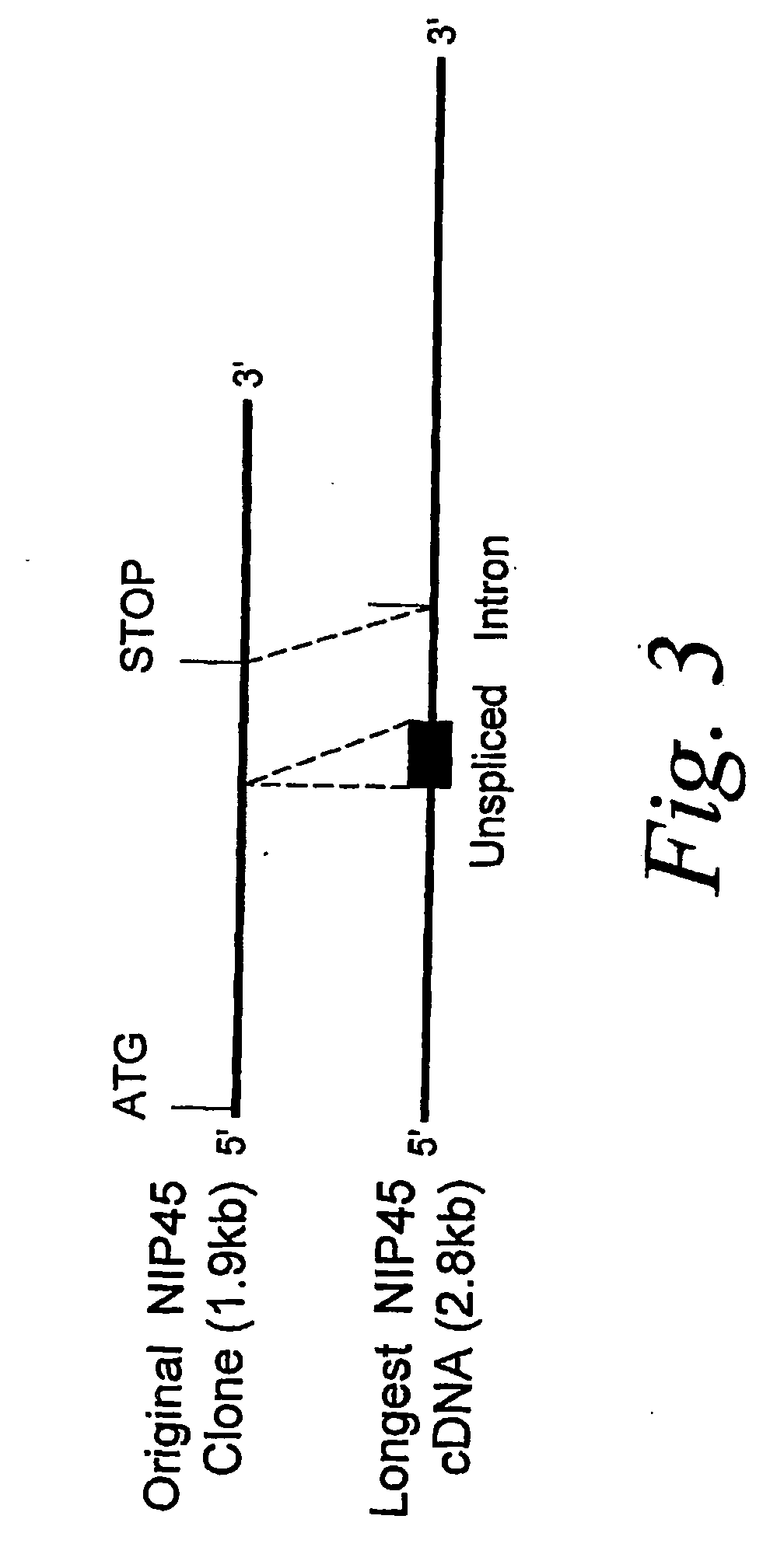Modulation of immune system function by modulation of polypeptide arginine methyltransferases
- Summary
- Abstract
- Description
- Claims
- Application Information
AI Technical Summary
Benefits of technology
Problems solved by technology
Method used
Image
Examples
example 1
Isolation of a NIP45 cDNA Using a Yeast Two-Hybrid Interaction Trap Assay
[0329]A yeast two-hybrid interaction trap assay was used to isolate proteins that could directly bind to the RHD of NFATp. An NFATp(RHD)-Gal4 fusion protein was prepared for use as the “bait” in the yeast two-hybrid assay by cloning a 900 bp fragment of murine NFATp (McCaffrey, P. G. et al. (1993) Science 262:750-754), spanning amino acids 228 to 520, into the BamHI site of vector pEG202 (Gyuris, J. et al. (1993) Cell 75:791-803). In frame fusion of the NFAT(p) polypeptide sequences to the Gal4 sequences was confirmed by DNA sequence analysis. This bait was used to screen a cDNA library prepared from the murine T cell line D10, constructed in the plasmid pJG4-5, to select for clones encoding polypeptides that interacted with the bait, using methodologies known in the art (see Gyuris, J. et al. (1993) Cell 75:791-803).
[0330]One class of interactors encoding a fusion protein with apparently high affinity for the ...
example 2
Interaction of NIP45 and NEATp In Vivo in Mammalian Cells
[0331]The ability of the NIP45 polypeptide to interact specifically with NFATp in vivo was tested in mammalian cells. The 1.9 kb NIP45 cDNA insert selected in the yeast two-hybrid system (described in Example 1) was subcloned into a mammalian expression vector which fuses the coding region to an epitope tag from a influenza hemagglutinin (HA) peptide, vector pCEP4-HA (Herrscher, R. F. et al. (1995) Genes Dev. 9:3067-3082), to create the expression vector NIP45-HA. This tagged construct was then cotransfected with an NFATp expression plasmid into HepG2 cells (which express low levels of NFATp). As controls, HepG2 cells also were cotransfected with NIP45-HA along with the parental expression vector for the NFATp construct (i.e., the expression vector without the NFATp insert) or with the NFATp expression vector along with an out of frame fusion of NIP45 with the epitope tag. Lysates were prepared from the transfected cells and i...
example 3
Structural Analysis of NIP45 cDNAs
[0333]The 1.9 kb NIP45 cDNA insert from the clone isolated using the two-hybrid assay (described in Example 1) was used to screen a D10.G4 T cell lambda zap II cDNA library (Stratagene) to identify full length clones. Screening of a library containing approximately 8×105 clones yielded 7 hybridizing clones most of which did not extend as far towards the 5′ end as the original isolate. Sequence analysis of the longest clone (2.8 kb), however, demonstrated identity to the original clone at the 5′ end. The structures of the original 1.9 kb cDNA isolate and the longest 2.8 kb cDNA isolate are compared in FIG. 3. The 2.8 kb cDNA isolate contained an additional segment of 180 bp located 868 bp downstream from the 5′ end of the original clone. Junction sequences at the ends of this 180 nucleotide segment indicate it to be an unspliced intron and conceptual translation of the nucleotide sequence within this region revealed an in-frame stop codon. Much of th...
PUM
| Property | Measurement | Unit |
|---|---|---|
| Composition | aaaaa | aaaaa |
| Interaction | aaaaa | aaaaa |
Abstract
Description
Claims
Application Information
 Login to View More
Login to View More - R&D
- Intellectual Property
- Life Sciences
- Materials
- Tech Scout
- Unparalleled Data Quality
- Higher Quality Content
- 60% Fewer Hallucinations
Browse by: Latest US Patents, China's latest patents, Technical Efficacy Thesaurus, Application Domain, Technology Topic, Popular Technical Reports.
© 2025 PatSnap. All rights reserved.Legal|Privacy policy|Modern Slavery Act Transparency Statement|Sitemap|About US| Contact US: help@patsnap.com



